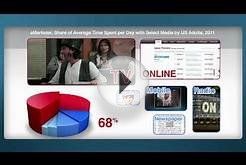 It seems simple, but if you really think about it, what is an ad impression anyway?
It seems simple, but if you really think about it, what is an ad impression anyway?
The Interactive Advertising Bureau (IAB) defines an ad impression as "a measurement of responses from an ad delivery system to an ad request from the user's browser, which is filtered from robotic activity and is recorded at a point as late as possible in the process of delivery of the creative material to the user's browser — therefore closest to actual opportunity to see by the user".
This definition is true in its purest sense, but was defined at a time when we were debating the difference between page hits and log file counts, and there were multiple ad servers accounting for ad delivery in wildly different fashions. Today we have a different challenge: there are many new types of ad formats with a variety of ways to measure and, more importantly, publishers have evolved by creating websites that look more like blog rolls or scrolls of pages. These changes are rendering the old technical definition of an ad impression obsolete.
The original definition simply counts a successful impression when an advertiser’s creative is delivered to the web page, regardless of placement on the page, viewable or not. Many advertisers have started asking for 'above the fold' only placements to help combat the counting of ads that appear out of sight of the consumer. Today, these impressions are still paid for when delivered and, as one would expect, if the consumer does not scroll far enough down the page the ad will never be viewed and is therefore wasted.
The IAB, and other similar organizations (4As and the ANA), have put forth a plan to promote a new measure that would only count viewable impressions. This effort serves to improve the quality and performance of online advertising and protect the advertiser from paying for unseen ads.
In theory, this change sounds great, but it may have unexpected repercussions - some good, and some bad, depending on your position. Marketers may initially like the idea of more control, as they will only pay for impressions that are in view to the consumer. Publishers will enjoy the increased pricing options on viewable placements and rewards for highly engaging content. Even ad networks and exchanges would benefit from eliminating the question of quality and creating more opportunities to fill branding campaigns.
But there also is a dark side, one less often thought about. There are certain negative aspects for each participant in this process, ones that are critical to consider before making a blanket change to counting impressions. Prices could rise and inventory could shrink; new rules might not take into consideration account time view; without engaging content, inventory could drop; a new need for monitoring if an ad is even in view. This binary measure of in-view ad impressions has positives and negatives mentioned above, and likely many others that have not been thought of yet.
There are other factors that should also be considered when determining a quality impression. Time spent with an ad is, in my opinion, a critical measure, especially for a brand marketer. If a consumer views an ad in the middle of the page for two seconds as they scroll down the page, how is that any better than an ad at the bottom of the page? And to be clear, the ad at the bottom of the page often times has the best performance, as it gives the consumer a clear path of where to go next as they surf the Web. Another important measure is engagement - does the consumer actually interact with an ad (e.g. fill out a form, click within the ad exploring options or sharing the ad via social elements)? Engagement is extremely important to the brand marketer as the more a consumer interacts with their product and message the more likely the consumer will have increased loyalty, consideration or intent to purchase.















